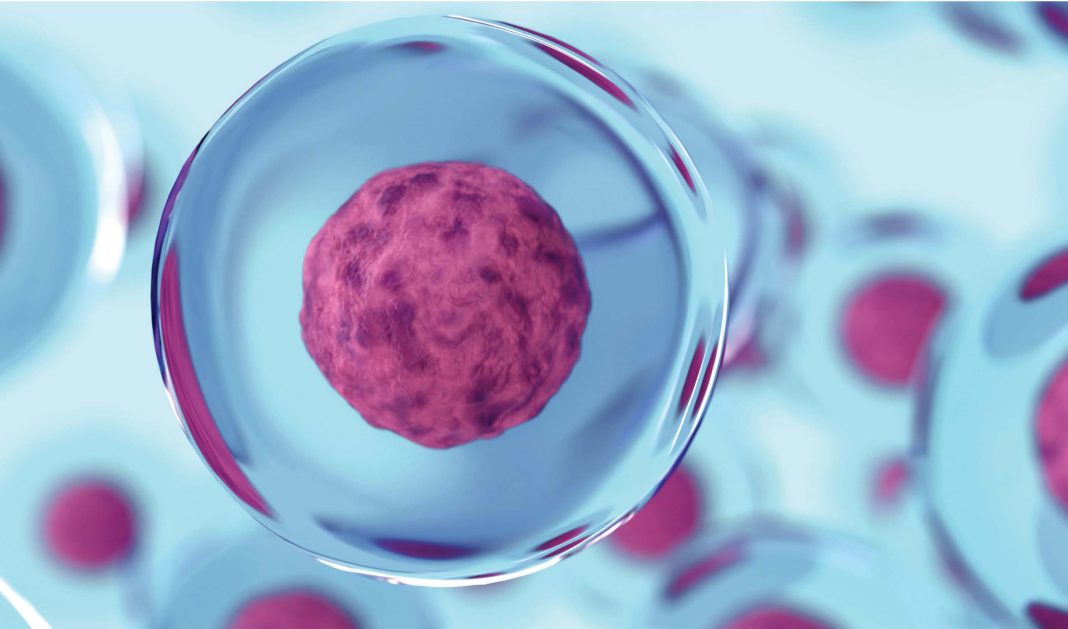We’ve all heard that what goes up must come down. But now, thanks to research from the University of Michigan, we’re learning that what goes down can also go up. As new principles go, that may not sound like much—except that it can be applied to cell differentiation. Indeed, in this context, the new principle invites us to rethink an old idea, the one telling us that a cell that is already traveling down a particular differentiation path must keep traveling, well, down.
“Cell fate and differentiation are similar to a ball running down a hill,” explained Cunming Duan, PhD, a professor of molecular, cellular, and developmental biology at the University of Michigan. “The ball is the stem cell. The stem cell divides and becomes a progenitor cell, which will become the future skin, neuron, liver, or muscle cell. That the ball only ran from uphill to downhill was the idea for a long time.
“People also thought this was true of adult tissue regeneration. If you cut your skin or injured a muscle, the idea was that there was this population of adult stem cells doing the same thing: they were a ball rolling down the hill. But starting in the last few decades, researchers have shown that’s overly simplistic.”
Duan and colleagues are contributing to a more sophisticated understanding of the ways differentiated cells can reenter the cell cycle upon injury or stress. For example, they recently described a new cell renewal mechanism. It is detailed in the Proceedings of the National Academy of Sciences, in an article titled, “ROS signaling–induced mitochondrial Sgk1 expression regulates epithelial cell renewal.”
“[We] investigated how quiescent cells are reactivated using a zebrafish model, in which a population of differentiated epithelial cells are reactivated under a physiological context,” the article’s authors wrote. They also reported that “an increase in mitochondrial membrane potential and TCA cycle/OXPHOS are required and sufficient for the cell cycle reentry.”
It has been understood that besides running downhill, a cell can cross the hill and become a different cell type. Also, a cell can go back up a hill and become a precursor cell to produce more cells. For example, in the human pancreas, alpha cells produce a hormone called glucagon. Beta cells in the pancreas produce the hormone insulin. But alpha cells can become beta cells.
It has also been understood that cells can dedifferentiate if they are stressed or injured. For example, a beta cell can dedifferentiate, become a precursor cell, and produce more healthy beta cells.
Recent studies have shown that dedifferentiation isn’t unique to beta cells. Many fully differentiated cells can roll back up the hill if you injure tissue. (Cancer cells also show this kind of plasticity, which complicates the ability to treat them.) But these recent studies relied on experiments performed in artificial systems.
Duan and colleagues were interested in preserving “physiological context.” So, they developed a model in zebrafish. Doing so ensured that they wouldn’t have to attempt anything so futile as surgically removing part of the fish heart or cutting out part of a mammalian liver as a way of studying cellular processes.
In the model, the researchers labeled calcium ion transporting epithelial cells with a green fluorescent protein that illuminates these cells. Using that, they were able to induce these differentiated cells to reenter the cell cycle and visualize the cell dividing, and to particularly zoom in on processes involving the mitochondria.
Mitochondria produce the energy-carrying molecule ATP. But mitochondria do much more than that, Duan said. When they break down sugar to produce ATP, they also produce reactive oxygen species (ROS), highly reactive chemicals that can cause cellular damage.
In the right amounts, mitochondrial ROS can act as signaling molecules. The team found that when cell dedifferentiation and proliferation were induced, ATP production was increased and mitochondrial ROS levels went up in these cells.
When the ROS levels go up, an enzyme that plays a role in cellular stress response called Sgk1 also increases in the cell’s cytoplasm. Then, Sgk1 moves from the cytoplasm into the mitochondria, where it phosphorylates the enzyme that synthesizes ATP and triggers ATP production.
To test this loop’s impact on the cell’s ability to dedifferentiate, the researchers blocked each step in this cycle.
“We feel this is actually required for the cell to roll back in the cell cycle,” Duan related. “In our system, if we knock out the ATP protein enzyme, if we knock out Sgk1, if we block the ROS production—if we block any of the steps, the cell can no longer go back in the cell cycle.”
The researchers then examined this mitochondrial loop in living human breast cancer cells and found that the same steps took place in human breast cancer cells. This result suggests that the mechanism is evolutionarily conserved.
Cells that exploit the mechanism include cancer cells, which Duan and colleagues hope will one day be more easily targeted through a better understanding of cell plasticity. The kind of cell plasticity seen in regenerating tissues is also seen in cancer, Duan pointed out. “It’s regarded as one of the major challenges of why we can’t easily treat cancer cells,” he continued. “If you eliminate one cancer stem cell, another can come back.”
Next, Duan hopes to better understand this mitochondrial loop in other cell types, with the idea that the pathway can be targeted someday both for tissue regeneration and to prevent abnormal growth, such as cancer.
“Cells and animals are far more resilient than we realized. They’re far more plastic. We used to think that they were kind of rigid,” he said. “Mitochondria plays a far more important role in the cell than we ever thought it would play. We found a very intricate pathway that works at a subcellular level and that dictates the cell’s ability to be resilient and to be plastic.”



